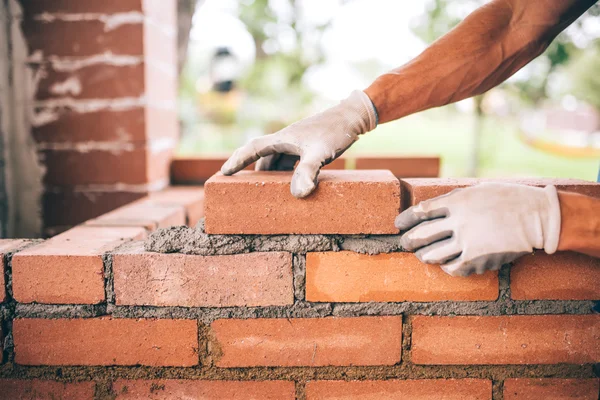Best Brick Jointers: A Comprehensive Review and Guide
When it comes to achieving professional-looking brickwork, a reliable brick jointer is an indispensable tool. These versatile gadgets allow you to create neat and precise joints between bricks, enhancing the overall aesthetics and structural integrity of your masonry projects. To assist you in your quest for the perfect jointer, we have compiled a list of the five best brick jointers available on Amazon. In this article, we will delve into the details of each jointer, including their usage, applications, and the pros and cons of each tool.
Our Top Picks for the Best Brick Jointers
Bon Tool 21-760 Brick Jointer
The Bon Tool 21-760 is a widely acclaimed brick jointer known for its durability and ease of use. Made of high-quality steel, this jointer is designed to last, even when used in demanding projects. Its double-ended design allows for two different joint sizes, providing versatility. The Bon Tool 21-760 is particularly suitable for larger bricklaying projects, such as patios and walkways.
Pros:
- Durable construction ensures long-lasting performance.
- Double-ended design offers versatility.
- Suitable for larger bricklaying projects.
Cons:
- May be too large for intricate brickwork.
- Lacks ergonomic features for extended use.
Kraft Tool BL261 1/2”x5/8” Brick Jointer
The Kraft Tool is a premium-quality brick jointer that combines durability with comfort. Its braided design provides extra strength, while the ergonomic handle allows for a comfortable grip during prolonged use. This jointer is ideal for both professional masons and DIY enthusiasts, offering precision and control. It is particularly useful for brickwork that requires intricate detailing.
Pros:
- Braided design for increased durability.
- Ergonomic handle enhances comfort during use.
- Suitable for intricate brickwork.
Cons:
- Limited versatility due to single joint size.
- Higher price point compared to other options.
MARSHALLTOWN The Premier Line
The Premier Line by Marshalltown is a reliable and affordable option for those seeking a practical brick jointer. With its high-carbon steel construction, it withstands frequent use without compromising its performance. This jointer’s compact size and double-ended design make it a versatile tool for various joint sizes. It is an excellent choice for both beginners and experienced masons.
Pros:
- Affordable price point.
- High-carbon steel construction ensures durability.
- Compact size and double-ended design provide versatility.
Cons:
- Handle design lacks ergonomic features.
- Not suitable for heavy-duty bricklaying projects.
Goldblatt G01165 Brick Jointer
The Goldblatt G01165 offers a unique combination of affordability and functionality. Its hardened steel blade guarantees longevity and precision, while the cushioned handle provides a comfortable grip. This jointer is suitable for a range of brickwork applications, including walls, fireplaces, and retaining walls. Its versatility and budget-friendly price make it an attractive option for both professionals and DIY enthusiasts.
Pros:
- Affordable option without compromising quality.
- Hardened steel blade ensures durability and precision.
- Comfortable cushioned handle.
Cons:
- Limited joint sizes available.
- Not the best option for intricate brickwork.
Bon Tool 11-767 Brick Jointer
The Bon Tool 11-767 is a popular choice among masons, renowned for its reliability and efficiency. Constructed from heavy-duty carbon steel, this jointer can withstand rigorous use while maintaining its performance. Its double-ended design provides versatility, accommodating different joint sizes. Whether you’re working on walkways, walls, or steps, the Bon Tool 11-767 is a dependable choice.
Pros:
- Heavy-duty carbon steel construction ensures durability.
- Double-ended design for versatility.
- Suitable for various masonry projects.
Cons:
- Some users may find the handle design uncomfortable.
- May be too large for small-scale projects.
Conclusion
Investing in a high-quality brick jointer is essential for achieving professional-looking brickwork. The Bon Tool 21-760, Kraft Tool, Premier Line by Marshalltown, Goldblatt G01165, and Bon Tool 11-767 are among the top brick jointers available on Amazon. Consider your project requirements, such as size, intricacy, and budget, when choosing the right jointer for your needs. By selecting one of these reliable options, you’ll be equipped with a tool that ensures precise and aesthetically pleasing joints, enhancing the durability and overall appeal of your brickwork.
What Should You Look for in a Brick Jointer?
When selecting a brick jointer, there are several key factors to consider to ensure you choose the right tool for your needs. Here are some important features to look for:
- Material: The material of the brick jointer determines its durability and longevity. Look for jointers made from high-quality materials such as hardened steel or carbon steel, as they can withstand frequent use without wearing out quickly.
- Size and Shape: Brick jointers come in various sizes and shapes to accommodate different joint widths and depths. Consider the scale of your project and the desired joint size when selecting a jointer. Some jointers have a double-ended design, offering versatility with multiple joint sizes in a single tool.
- Handle Design: A comfortable handle design is crucial, especially if you anticipate working on large or time-consuming projects. Look for jointers with ergonomic handles that provide a secure grip and reduce strain on your hand and wrist.
- Versatility: Depending on your masonry projects, you may require a jointer that can create different joint profiles. Some jointers have a single profile, while others offer multiple profiles or adjustable options. Assess the versatility of the jointer to ensure it can meet your specific project requirements.
- Price and Quality: Consider your budget when choosing a brick jointer, but also prioritize quality. While there are affordable options available, it’s important to strike a balance between cost and durability. Investing in a higher-quality jointer may save you money in the long run by offering better performance and longevity.
- Reviews and Ratings: Before making a purchase, read customer reviews and ratings to gather insights from other users. This can provide valuable information on the tool’s performance, durability, and overall user satisfaction.
- Brand Reputation: Opting for well-established brands known for producing reliable masonry tools can give you added confidence in your purchase. Research reputable brands with a track record of producing high-quality jointers.
By considering these factors, you can make an informed decision and select a brick jointer that meets your specific needs, ensuring precise and professional results in your masonry projects.
Exploring the Versatile Applications of a Brick Jointer
- Creating Strong and Aesthetic Brickwork: The primary application of a brick jointer is to create neat and well-defined joints between bricks. By using a jointer, you can ensure that the mortar between the bricks is evenly distributed and tightly packed. This not only enhances the overall appearance of the brickwork but also improves its structural integrity. The jointer allows you to shape the joints, achieving different profiles such as concave, V-shaped, or flat, depending on the desired aesthetic and functional requirements.
- Repairing and Restoring Brick Structures: Brick jointers are invaluable tools when it comes to repairing and restoring old or damaged brick structures. Over time, the mortar between bricks may deteriorate or crack, compromising the stability of the structure. A jointer enables you to remove the old, damaged mortar and replace it with fresh mortar, ensuring a strong bond between the bricks. The jointer’s ability to shape the joints helps in maintaining consistency with the existing brickwork, resulting in a seamless and visually pleasing restoration.
- Tuckpointing: Tuckpointing is a technique used to enhance the appearance of brickwork by adding contrasting-colored mortar to create the illusion of fine joints. A brick jointer is essential for tuckpointing, as it allows you to shape and finish the contrasting mortar to match the desired profile and dimensions. This technique is commonly used in historical restoration projects or to add decorative elements to brick structures, providing a visually striking effect.
- Paving and Pathway Construction: Brick jointers find extensive use in paving and pathway construction projects. Whether you are laying bricks for a patio, garden pathway, or driveway, a jointer ensures that the joints are consistent in size and depth. This results in a uniform and professional finish, enhancing the overall aesthetics of the paved area. The jointer’s versatility in creating different joint profiles allows for customization to suit the design and style of the outdoor space.
- Fireplace and Chimney Construction: A brick jointer is an essential tool when constructing fireplaces and chimneys. These structures require precise and secure joints to withstand the high temperatures and structural demands. A jointer helps in achieving tight and uniform joints, ensuring the bricks are firmly bonded together. Additionally, it aids in shaping the joints to enhance the heat resistance and visual appeal of the fireplace or chimney.
- Decorative Masonry Work: Beyond its functional applications, a brick jointer can also be utilized for decorative purposes. In intricate masonry designs and architectural details, jointers can create unique and eye-catching patterns by manipulating the joints. Whether it’s decorative arches, borders, or patterns on walls, a jointer allows for precision and creativity in achieving stunning decorative effects.
Step-by-Step Guide: How to Use a Brick Jointer Effectively
Using a brick jointer properly is essential for achieving clean and professional-looking joints in your masonry work. Follow this step-by-step guide to learn how to use a brick jointer effectively:
Step 1: Prepare the Work Area
Before you begin, make sure you have all the necessary tools and materials ready. Ensure the bricks are clean and free from debris or excess mortar. Set up a comfortable and well-lit work area.
Step 2: Choose the Right Jointer Size
Select a brick jointer size that corresponds to the desired joint width. The jointer should fit snugly within the joint space without causing excessive pressure on the bricks.
Step 3: Apply Mortar and Lay Bricks
Apply an appropriate amount of mortar to the joint using a trowel. Lay the bricks in their designated positions, leaving a consistent gap between them for the joints.
Step 4: Position the Jointer
Hold the brick jointer firmly with one hand, positioning it at the start of the joint you want to shape. Make sure the jointer’s blade aligns with the center of the joint.
Step 5: Shape the Joint
Apply gentle pressure on the jointer while moving it along the joint in a steady and consistent manner. Push the jointer down into the mortar to achieve the desired depth and shape. Maintain a smooth and controlled motion throughout the process.
Step 6: Clean the Jointer
After each pass, use a wire brush or damp cloth to clean any excess mortar from the jointer’s blade. This prevents the buildup of dried mortar, ensuring consistent results and preventing damage to the jointer.
Step 7: Repeat the Process
Continue shaping the joints by moving the jointer along the entire length of each joint. Be mindful of maintaining a consistent joint depth and shape throughout the project.
Step 8: Finishing Touches
Once you have shaped all the joints, inspect them for any inconsistencies or imperfections. Use the jointer to make necessary adjustments or corrections to achieve uniformity.
Step 9: Cure the Mortar
Allow the mortar to cure according to the manufacturer’s instructions before applying any finishing touches or further work on the brickwork. This typically involves keeping the newly laid bricks moist and protected from direct sunlight or extreme weather conditions.
Step 10: Clean Up
Clean your tools, including the jointer, thoroughly after use. Remove any excess mortar from the joints and wipe down the jointer with a damp cloth to prevent mortar buildup.
By following these step-by-step instructions, you can effectively use a brick jointer to achieve clean and professionally shaped joints in your masonry projects. Remember to exercise caution, work at a comfortable pace, and practice consistency for the best results.
Frequently Asked Questions
What are common jointer sizes?
Common brick jointer sizes refer to the width or thickness of the joints that the jointer can create. The sizes are typically measured in inches or millimeters. Here are some of the common jointer sizes:
1/4 inch (6 mm): This is a small joint size commonly used for intricate brickwork or when a minimal joint width is desired.
3/8 inch (10 mm): A slightly wider joint size that is commonly used in general brickwork applications.
1/2 inch (13 mm): This is a versatile joint size and is widely used in various masonry projects. It provides a balanced joint width that offers both aesthetic appeal and structural strength.
5/8 inch (16 mm): A wider joint size often employed in larger brick structures or when a more prominent joint profile is desired.
3/4 inch (19 mm): This joint size is frequently used in heavy-duty brickwork projects, such as constructing walls, fireplaces, or retaining walls. The wider joint allows for better mortar adhesion and increased structural stability.
It’s important to note that the availability of jointer sizes may vary depending on the brand or manufacturer. Some jointers may offer a single joint size, while others may have a double-ended design, allowing for different joint sizes in a single tool.
When selecting a jointer size, consider the specific requirements of your project, such as the scale of the brickwork, the desired joint width, and the structural considerations. Ultimately, choosing the appropriate jointer size will help you achieve the desired aesthetic and functional outcome in your masonry work.
Do I need a brick jointer?
Whether or not you need a brick jointer depends on the specific nature of your masonry projects and your desired outcomes. Here are some factors to consider when deciding if a brick jointer is necessary for your needs:
- Type of Project: If you are involved in bricklaying or masonry work that requires creating clean and consistent joints between bricks, a brick jointer is highly recommended. It allows you to shape and finish the joints, improving the appearance, structural integrity, and overall quality of the brickwork.
- Joint Aesthetics: If you prioritize the visual appeal of your brickwork, a brick jointer is essential. It enables you to achieve precise and uniform joint profiles, such as concave, V-shaped, or flat, which contribute to a more professional and aesthetically pleasing result.
- Project Scale: The size and complexity of your masonry projects can influence the need for a brick jointer. For smaller projects or simple applications, you may be able to achieve satisfactory results using alternative methods like hand tools or makeshift jointers. However, for larger or more intricate projects, a brick jointer offers greater efficiency, accuracy, and consistency.
- Longevity and Durability: A properly shaped joint created by a brick jointer ensures a tight bond between the bricks and improves the longevity of the brickwork. The jointer aids in achieving a more robust and weather-resistant structure.
- Professional Standards: If you are working in a professional capacity as a mason or contractor, using a brick jointer is typically expected to achieve industry-standard results. It demonstrates your commitment to quality craftsmanship and ensures your work meets the expectations of clients or building codes.
While a brick jointer is a valuable tool, it’s important to consider your specific circumstances and project requirements before making a purchase. If your projects involve basic bricklaying with minimal joint detailing, you may be able to achieve satisfactory results without a brick jointer. However, for more complex projects, achieving professional-quality joints and precise finishes becomes significantly easier with the use of a dedicated brick jointer.
What can I use instead of a brick jointer?
If you don’t have access to a brick jointer or prefer not to use one, there are alternative methods and tools you can utilize to achieve acceptable joint finishes in your masonry work. Here are some options:
- Pointing Trowel: A pointing trowel is a versatile tool commonly used for brickwork. While it may not provide the same level of precision as a brick jointer, you can use the edge of the pointing trowel to shape the mortar joints to a desired profile. Apply gentle pressure and carefully shape the joints by running the edge of the trowel along the mortar lines.
- Rounded Stick or Dowel: If you prefer a rounded joint profile, you can use a rounded stick or dowel that matches the desired joint width. After laying the bricks and applying the mortar, press the rounded stick into the mortar to shape the joint, ensuring consistency and uniformity throughout.
- Finger Jointing: This method involves using your finger to shape the joints directly. Wet your finger slightly and carefully run it along the mortar lines to shape and smooth the joints. It requires precision and finesse to achieve consistent results but can be effective for small-scale projects or repairs.
- Brushing Technique: For a rustic or textured look, you can use a stiff-bristle brush to create a brushed joint finish. After laying the bricks and applying the mortar, brush the surface of the joints to achieve a slightly recessed and textured appearance.
- Raking Technique: This method is commonly used for achieving a distinct joint appearance. After laying the bricks and allowing the mortar to partially dry, use a pointed tool or a specialized rake tool to scrape the excess mortar from the joints, leaving behind a recessed or “raked” joint effect.
It’s important to note that while these alternative methods can be used to shape and finish the joints, they may require more skill and practice to achieve consistent and professional results compared to using a dedicated brick jointer. Additionally, the available options may depend on the desired joint profile and the specific tools you have at your disposal.
editor's pick
news via inbox
Stay one step ahead with exclusive tips, guides, and offers delivered directly to your inbox.
Sign up for our newsletter and elevate your home improvement game today!







